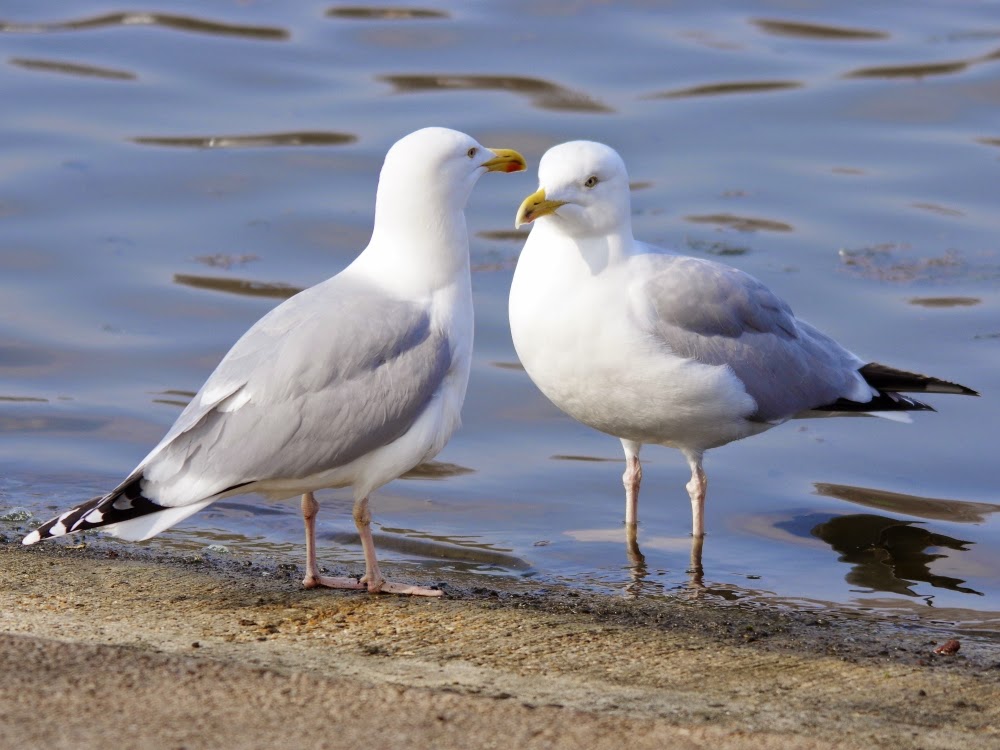There are Jackdaws in all parts of the park now. A week ago Des McKenzie counted 11, but I think there must be more now. These were in a tree near the Physical Energy statue.
There have been two sightings of a Jackdaw in St James's Park too, so they are continuing their spread. I think their original centre before they reentered the park was somewhere in Bayswater, but I don't know the exact place.
There were at least a dozen Pied Wagtails running around on the grass on the south side of the Serpentine, calling to each other and flying up into the trees when disturbed. They have been hunting in this area for several days.
This Song Thrush obligingly posed for a picture beside the Rima relief.
As the weather warms up the lake has become full of disgusting brownish algae, not the usual green kind we see. At Peter Pan a Mandarin was pecking at them without enthusiasm, and soon gave up.
At the Lido, a Lesser Black-Backed Gull had found something more nutritious, a rather decayed carp.
Nearby, a pair of Herring Gulls seemed fond of each other.
They can indulge themselves, because there is a breeding colony of them less than a mile away, near Paddington Station. That is why Herring Gulls outnumber Lesser Black-Backs so greatly in this area.
Two Feral Pigeons were fighting fiercely on the rafters in one of the small boathouses. There is usually a nest here in the spring, but the pair seem to want keep the space for themselves.
The male Tawny Owl had not emerged when I had to go home early. But the male Little Owl peered out of his nest hole for a couple of seconds.








Wonderful amount of species, and now on my list for places to visit. Cheers from New Zealand
ReplyDeleteGood to hear from you. In New Zealand the Great Crested Grebe is a Maori National Treasure, and quite right too.
DeleteA truly delightful entry. Thank you so much! Elizabeth
ReplyDeleteGood morning, Ralph. Just chewing over with a birding friend the location of water birds' nests. Some go for the water or bank (eg Grebes, Mallards, Coots or Swans), others choose to fly up to nest in trees (eg Herons, Egyptian Geese, and possibly Mandarin Ducks). Why?
ReplyDeleteGrebes, Coots, swans and most ducks can't perch in trees. Moorhens and Mandarins can, and use tree holes (though Moorhens will nest in any sheltered place).
DeleteBrilliant. How do the young leave the nest? Is it by falling out? And bumping their way down to the ground?
DeleteDo losses incurred through injury on descent outweigh potential losses through predation if their nests were at ground level? That is, is it logical to nest in trees in terms of offspring survival rates?
Hope you don't mind me picking your brains Ralph. My birding friend is also interested in your knowledge of this subject, so it's not just me!
They jump out when their mother calls them. They are small enough to fall any distance uninjured.
DeleteAmazing! Thank you very much.
DeleteMallards sometimes nest in tree clefts, also famously in window boxes. I wonder if Egyptian Geese prefer trees because pair bonds are especially strong and a pair of birds this size is well able to repel aerial/most arboreal attackers compared with the difficulties they might have with large ground carnivores. In turn the conspicuity of larger birds nesting and escorting young may be why pair bonds are especially strong in larger wildfowl. Though a mallard drake will sometimes stand guard by a nesting female. Jim n.L.
DeleteI'm sure you're right about Egyptian Geese. As birds inhabiting the more fertile regions of Africa, they have to cope with all kinds of large ground predators. They must find things very easy here, without a lion to be seen.
DeleteMind you if pine martens were to make a comeback, that could pose big problems for feral Egyptians and Mandarins as well as grey squirrels. Ok now let's not miss the eclipse Ralph! Jim
Delete